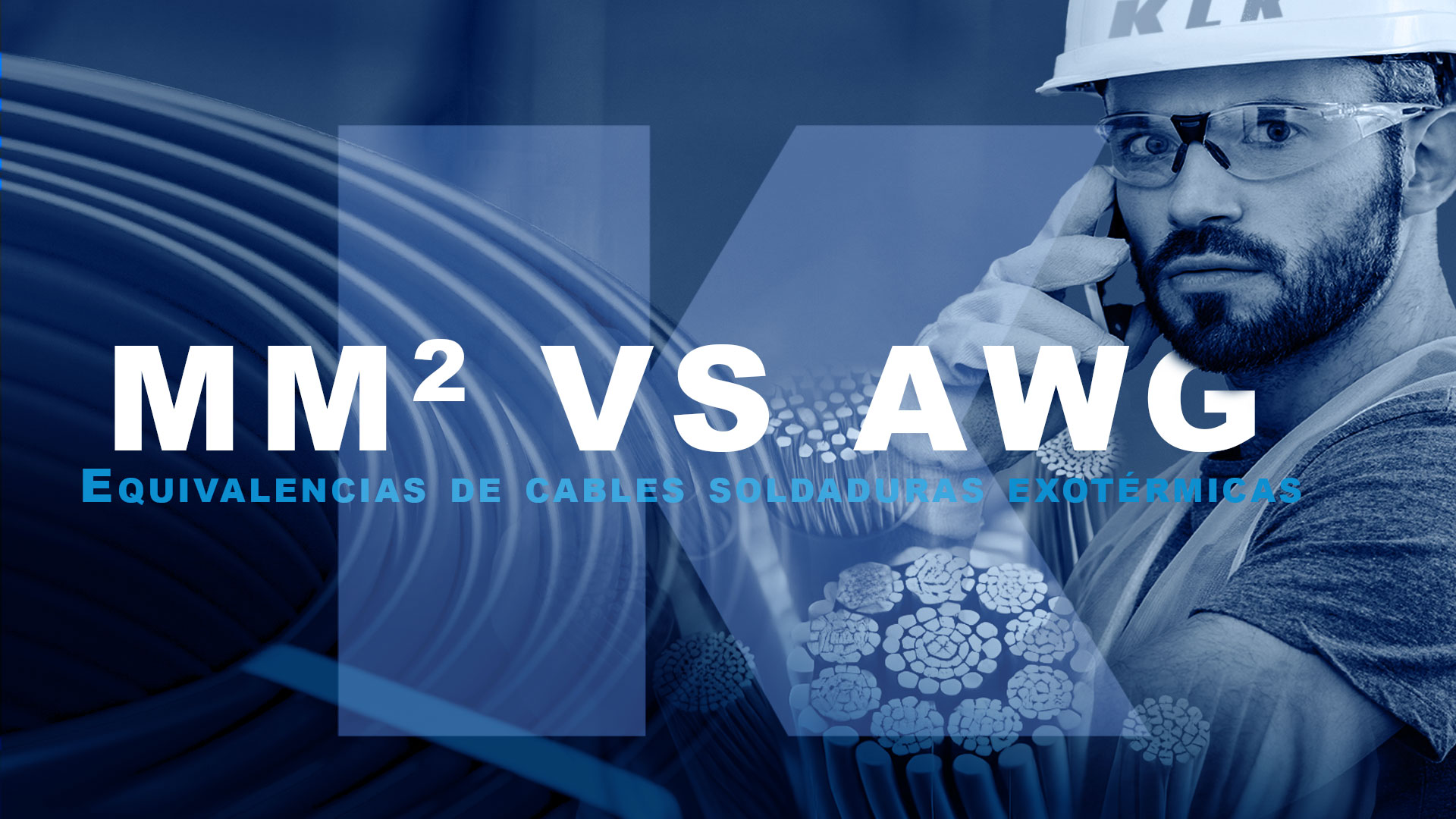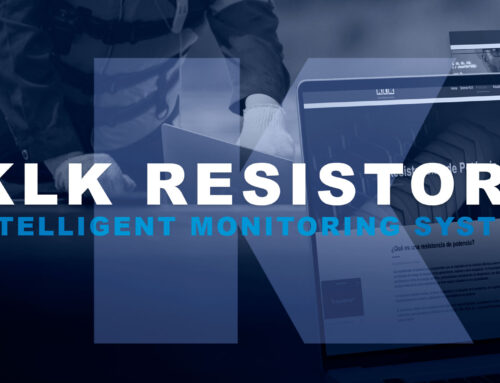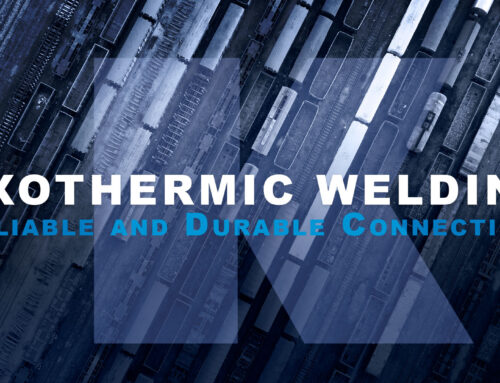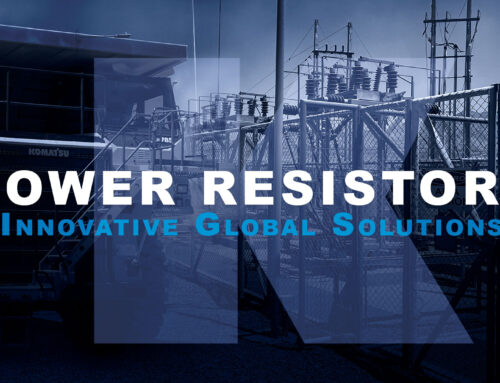Cable Equivalents for Exothermic Welds
Are you clear on the equivalencies between conductors in mm², AWG, and MCM?
Cable Equivalents for Exothermic Welds In the world of electricity, professionals must deal with different cable measurement systems, and depending on the country or standard they work with, knowing Cable Equivalencies becomes a challenge. This is especially true when selecting the appropriate cable for an installation involving specific products, such as cable equivalents for exothermic welding. Whether in mm² (Europe), AWG (USA), or MCM (older or industrial systems), the equivalence between these systems is not always clear.
Professionals must deal with different cable measurement systems depending on the country or standard they are working with.
Engineering Department KLK Electro Materials
At KLK Electro Materials, we know that choosing the correct cable is essential to ensuring safe and durable electrical connections. and we will help you to know the Cable Equivalents for Exothermic Welds. That’s why, in this article, we explain the equivalencies between these systems and how they affect grounding connections and exothermic welding.
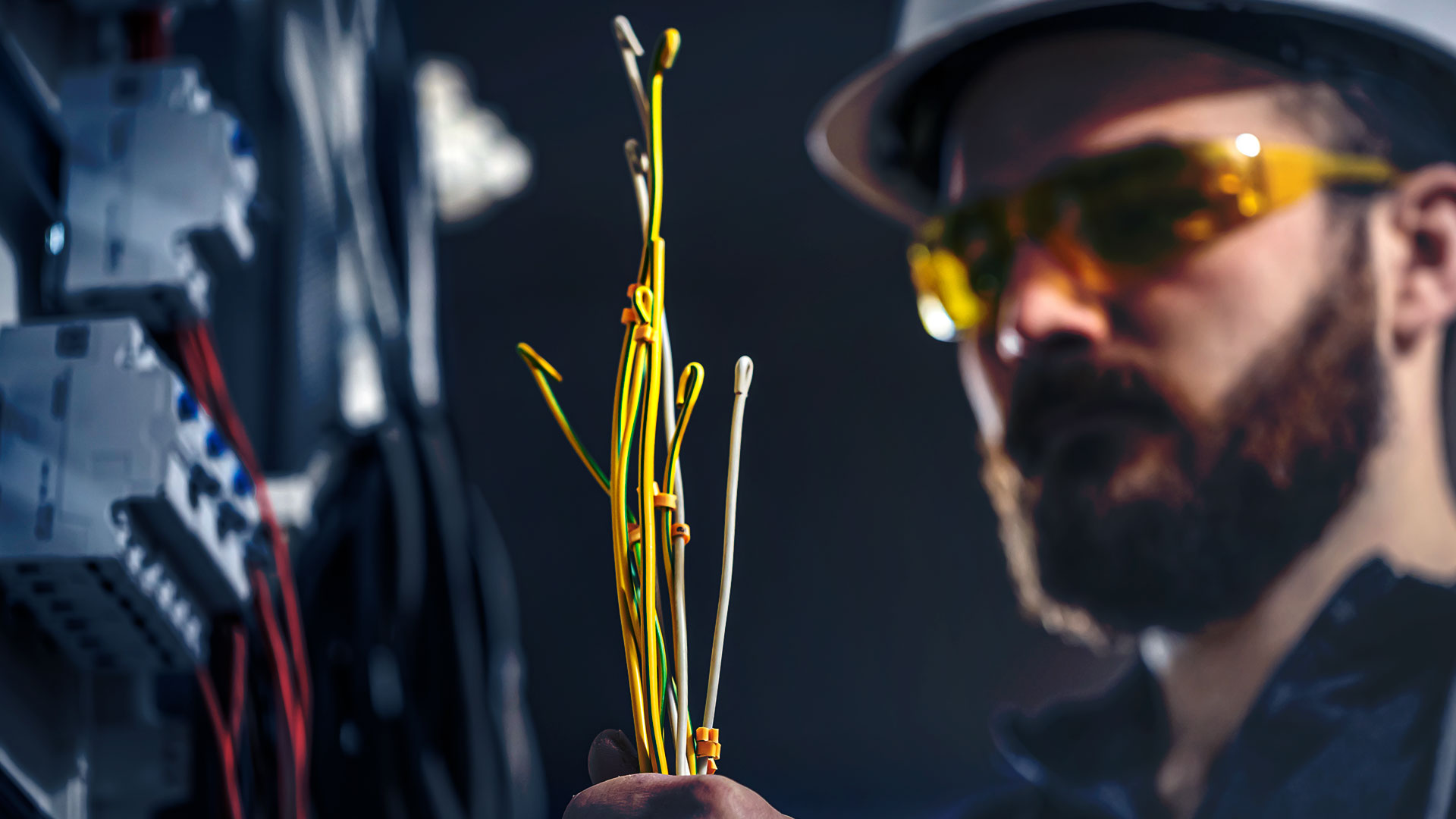
Technician measuring on-site| KLK Electro Materiales
The Importance of Exothermic Welding in Electrical Connections
Exothermic welding is a widely used method for making electrical connections, especially in grounding systems and high-security installations where a durable, reliable, and low-resistance bond is required. This process involves a chemical reaction that generates enough heat to melt the metals and create a molecularly strong connection.
At KLK Electro Materials, we are experts in exothermic welding solutions, such as our K-Cup and ELPA kits, which allow efficient and safe copper-to-ground or copper-to-rail connections. However, to achieve maximum efficiency in these installations, selecting the correct cable is crucial, and this is where the different cable measurements according to international standards come into play.
Cable Measurement Systems: mm², AWG, and MCM
Now, a bit of theory related to the types of situations that electrical professionals around the world encounter depending on various standards for measuring cable thickness. The three main systems are:
mm² (Square Millimeters)
The measurement system in mm² is primarily used in Europe and other countries that adopt the metric system. It refers to the cross-sectional area of the electrical conductor, meaning the area of the cable as seen from the front. This measurement is crucial because it indicates how much electrical current a cable can safely and efficiently carry. The larger the mm² value, the greater the current-carrying capacity of the cable.
-
-
Application Example:
A 4 mm² cable is commonly used in domestic and commercial installations to power equipment such as water heaters, which require more current than typical household appliances.
-
AWG (American Wire Gauge)
The AWG system is predominant in North America, especially in the United States, Canada, and Mexico. Unlike mm², AWG measures the diameter of the conductor instead of its cross-sectional area. It is important to note that in this system, the higher the AWG number, the smaller the cable diameter. For example, a 10 AWG cable is thicker than a 20 AWG cable.
The AWG system is widely used in a variety of electrical applications, from residential installations to industrial systems, and is particularly useful in projects where cables must comply with North American regulations.
-
- Application Example:
A 12 AWG cable is commonly used for connections in standard outlets of up to 20 amps in the United States.
- Application Example:
MCM (Thousand Circular Mils) o kcmil
MCM (short for “Thousand Circular Mils”) is a system primarily used for measuring large-sized cables, especially in industrial applications. It is also often referred to as kcmil (thousandths of a square inch). This system measures the area of a cable in circular mils (a “mil” is one thousandth of an inch).
MCM is used when large cables are needed to handle high currents, such as in electrical distribution systems, data centers, or industrial installations. A higher MCM value indicates a larger cable that can carry more current.
-
- Application Example:
A 250 MCM cable is used in large industrial or commercial installations, such as in power supply systems for buildings or plants that require high volumes of energy.
- Application Example:
Equivalency Table between mm², AWG, and MCM
| Approximate Diameter mm | Section mm2 | Section AWG | Section MCM (kcmil) |
|---|---|---|---|
| 0,8 mm | 0,5 mm² | 20 AWG | — |
| 1,1 mm | 1.0 mm² | 18 AWG | — |
| 1,4 mm | 1,5 mm² | 16 AWG | — |
| 1,7 mm | 2,5 mm² | 14 AWG | — |
| 2.1 mm | 4,0 mm² | 12 AWG | — |
| 2,7 mm | 6,0 mm² | 10 AWG | — |
| 3,5 mm | 10 mm² | 8 AWG | — |
| 4,5 mm | 16 mm² | 6 AWG | — |
| 5,6 mm | 25 mm² | 4 AWG | — |
| 6,7 mm | 35 mm² | 2 AWG | — |
| 7,9 mm | 50 mm² | 1 AWG | — |
| 9,4 mm | 70 mm² | 2/0 AWG | — |
| 11,0 mm | 95 mm² | 3/0 AWG | — |
| 12,5 mm | 120 mm² | 4/0 AWG | — |
| 13,7 mm | 150 mm² | — | 250 MCM |
| 15,0 mm | 185 mm² | — | 350 MCM |
| 17,00 mm | 240 mm² | — | 500 MCM |
| 19,00 mm | 300 mm² | — | 600 MCM |
| 21,0 mm | 400 mm² | — | 750 MCM |
Examples of Application in Exothermic Welding
Example 1: Copper to Rail Connections
In a railway installation, it is common to work with copper cables of different sizes for grounding connections on the rails. Our ELPA-Rail kits are designed to weld cables ranging from 10 mm² to 240 mm², and are especially useful in systems where durable mechanical and electrical connections with low resistivity must be ensured.
Example 2: Industrial Installations in the U.S. and Europe
In an industrial installation, larger diameter cables may be used for grounding. An engineer working with MCM (kcmil) cables for large installations may need to convert to mm² when working on projects in Europe. For example, a 500 MCM cable used in the U.S. is equivalent to a 240 mm² cable in Europe.
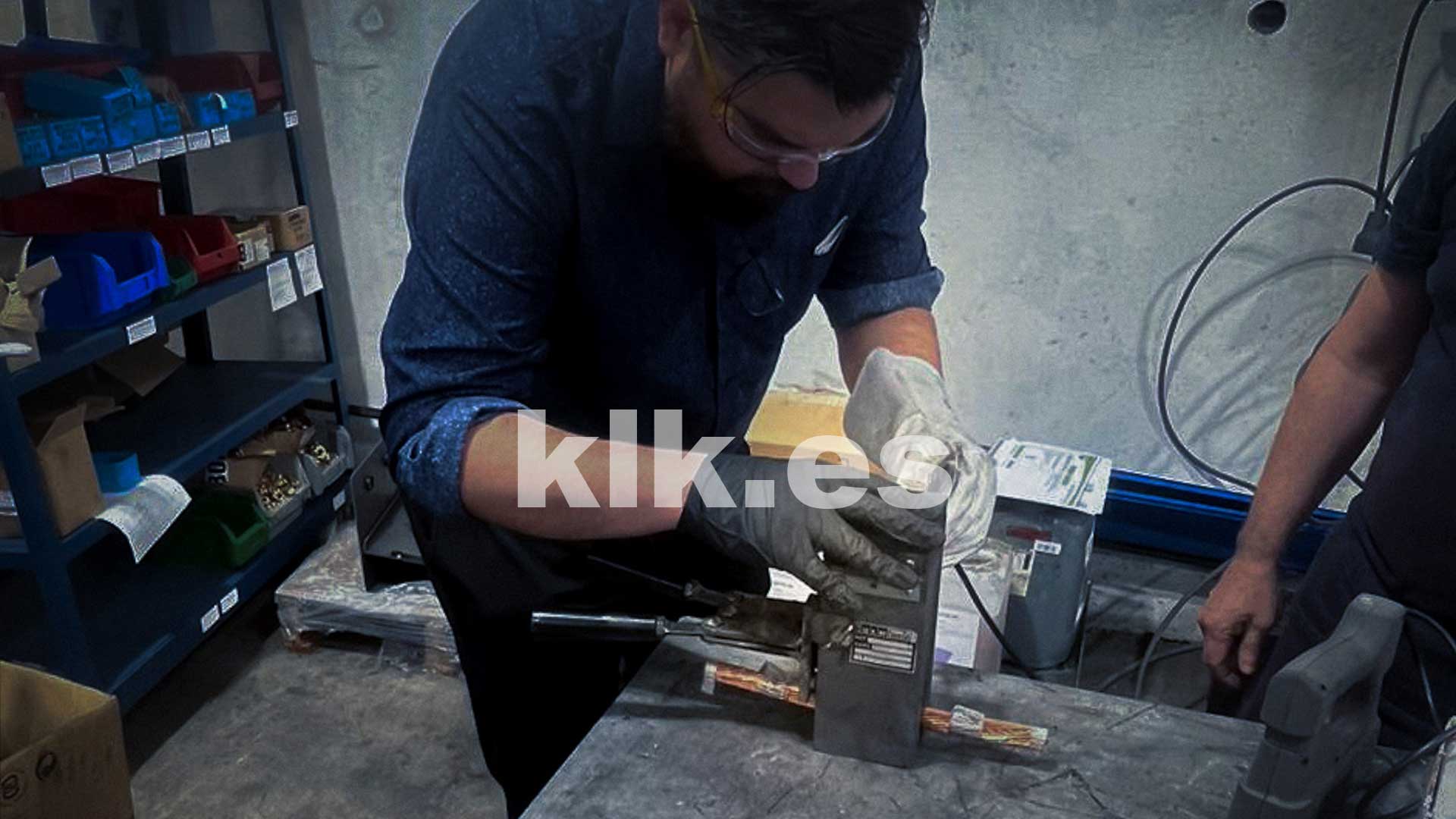
Electrical professionals performing an exothermic weld | KLK Electro Materials
Considerations for Selecting the Measurement Method
If you are an electrical installer or engineer working with exothermic welding or grounding connections, understanding the equivalencies between different cable measurement systems is essential to ensure a proper and safe installation.
Here is a brief summary of the benefits of fully understanding the cable equivalencies for exothermic welding in our Welding Kits, designed to offer maximum performance with any type of cable, ensuring safe, efficient, and durable connections.
Benefits of Using KLK Exothermic Welding
- Quick and safe installation: Our kits eliminate complicated steps, saving time and reducing risks.
- International compatibility: They are suitable for cables measured in mm², AWG, and MCM.
- Strength and durability: The connections made with our kits offer superior mechanical and electrical resistance.
KLK Electro materiales slu
Mail | Web | Teléfono | Chatbot | Social Media
Need Help?

